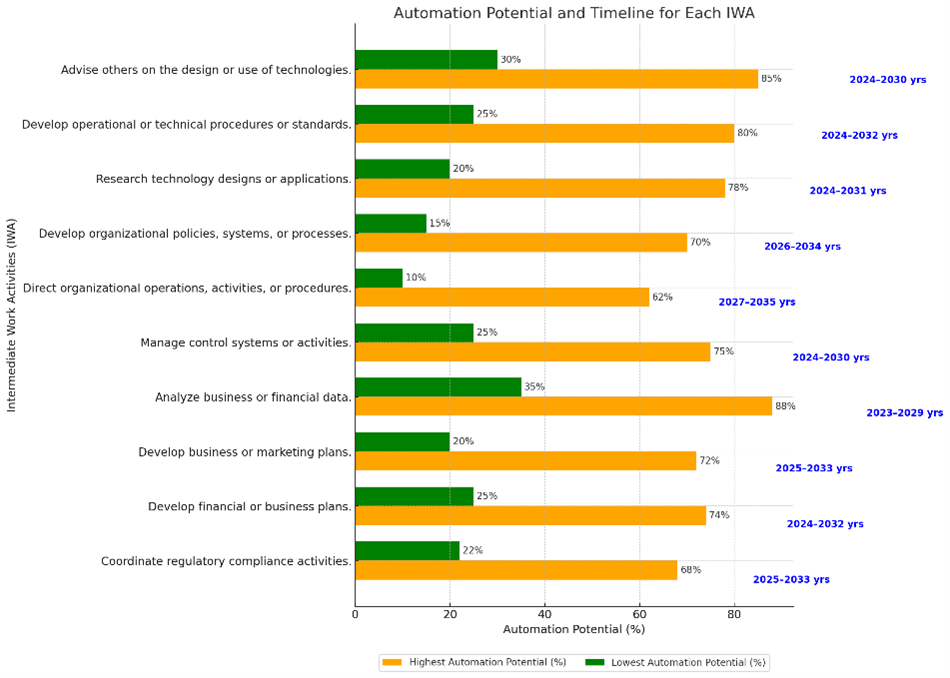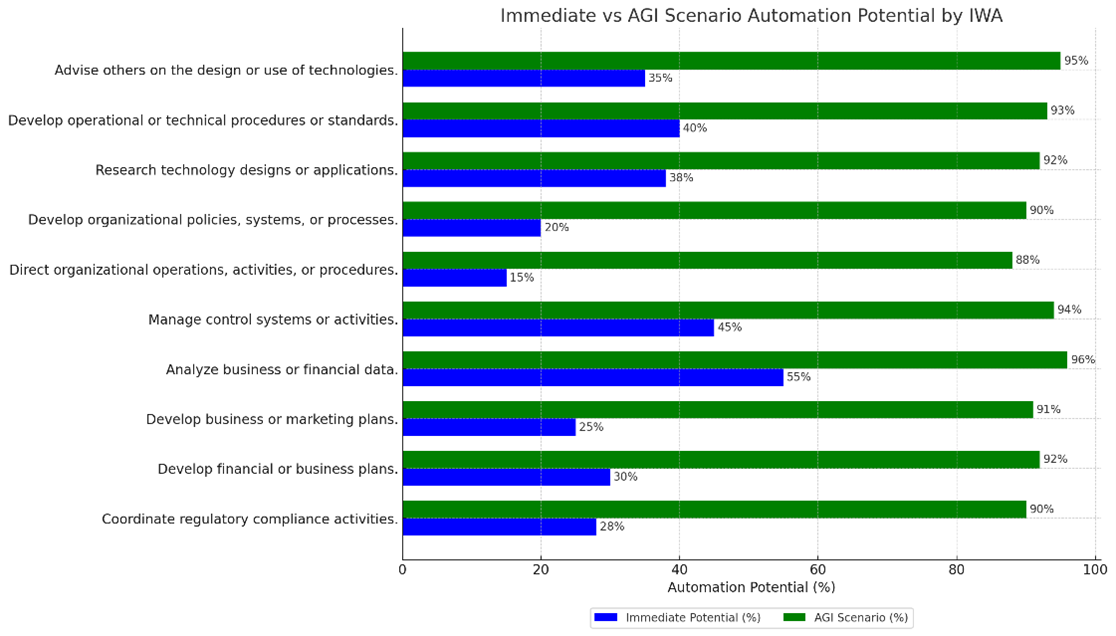Issue 6: Solutions Architect
AI job disruption forecasting — Issue 6
A Solutions Architect designs technology solutions that meet business needs, bridging the gap between strategy and implementation. For Solutions Architects, AI is moving from helper to game-changer.
We used the job description of a Solutions Architect posted on a public job portal.

Figure 1: Automation Potential
Figure 1 illustrates the automation risk across the various core responsibilities of a Solutions Architect. Analytical and documentation-heavy tasks like “Analyze business or financial data” and “Develop financial or business plans” are especially vulnerable, with automation potential ranging from 74% to 88%, and disruption projected between 2023 and 2032. Meanwhile, more strategic or integrative tasks—such as “Direct organizational operations” and “Develop organizational policies”—show relatively lower automation potential (62–70%) and are expected to be impacted later, around 2026–2035.

Figure 2: AGI Disruption
Figure 2 compares immediate automation potential with an Artificial General Intelligence (AGI) scenario. Under current capabilities, most tasks show modest disruption risk, with immediate automation estimates between 20% and 55%. However, under AGI, these numbers rise sharply—with nearly all tasks showing 90%+ automation potential, indicating that AGI could make much of the Solutions Architect’s role fully automatable.
While this paints a disruptive picture, it also highlights that Solution Architects must focus on leveraging their strengths in interdisciplinary thinking and leadership – areas where they continue to hold a clear edge over AI.
